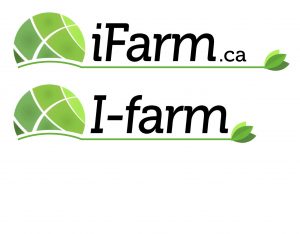Source: Wall Street Journal
Farmland Investments Take Root TIAA-CREF gets $3 billion for new cropland fund; ‘gold with a coupon’
Farmland Partners CEO Paul Pittman says that softer farmland values are creating buying opportunities. “A little bit of pain in farm country makes our job easier.”
Farmland Partners CEO Paul Pittman says that softer farmland values are creating buying opportunities. “A little bit of pain in farm country makes our job easier.” By David Kesmodel and Jesse Newman
Farmland is attracting growing interest from pension plans, hedge funds and even mom-and-pop investors as they seek to diversify assets and capitalize on an agriculture-industry slump that has pushed down land prices in some regions.
Financial-services giant TIAA-CREF announced Tuesday that it has raised $3 billion for its second global farmland-investment partnership, exceeding its initial target of $2.5 billion. The fund, which will invest in North and South America and Australia, has lined up commitments from institutional investors, including the New Mexico State Investment Council and the U.K.’s Greater Manchester Pension Fund.
TIAA-CREF’s fund marks one of the biggest in a recent wave of cropland investments by institutional investors. Meanwhile, several U.S. public-stock offerings by farmland owners who have packaged their property as real-estate investment trusts, or REITs, are enabling retail investors to place bets on the sector as well.
Investors are betting farmland will yield good long-term returns as global food demand rises with growing populations and wealth in Asia, Africa and elsewhere. The amount of arable land is expected to increase only modestly, at best, due to urbanization and a lack of acreage suitable for crops.
Farmland is part of a broader push by investors into “real” assets—physical property including office buildings, bridges and timber—which typically trade at a low correlation with traditional stocks and bonds. Farmland also generates income from rent paid by farmers, leading some to call it “gold with a coupon.”
One of the attractions is “these are assets that are producing an essential need for society and, in many cases, into perpetuity,” said Jose Minaya, senior managing director at TIAA-CREF Asset Management.
TIAA-CREF, which has managed retirement assets for employees of universities and nonprofits for decades, began investing in farmland in 2007 and now manages more than $5 billion in farmland assets world-wide, Mr. Minaya said. It raised $2 billion in commitments for its earlier global farmland partnership.
Homestead Capital USA LLC, a private-investment partnership led by former executives at Goldman Sachs Group Inc. and J.P. Morgan Chase & Co., last month closed on its first farmland-investment fund, raising $173 million. Among its investors are the University of Alabama—making its first investment in cropland—and the Teacher Retirement System of Texas.
American Farmland Co., led by executives from Optima Fund Management, a firm that invests in hedge funds, in June filed plans to raise up to $100 million in an initial public offering for its REIT. It would be the third farmland-focused public REIT, joining Farmland Partners Inc., which went public last year, and Gladstone Land Corp. , which did so in 2013.
Institutional investment in farmland in the U.S., the world’s biggest exporter of agricultural commodities, has topped $2 billion over the past two years, according to iiSearches, a data arm of media firm Institutional Investor. While institutional ownership accounts for less than 1% of the $2.4 trillion U.S. farm real-estate market, according to University of Illinois economist Bruce Sherrick, institutional investors are likely to play a greater role, in part because many U.S. farmers—whose average age is 58, according to federal data—are nearing retirement.
U.S. farmland capital values have risen on average 4.6% annually since 1990, according to an index from the National Council of Real Estate Investment Fiduciaries. Including the income generated from land, the average return has been 11.8%.
Farmland values in the Midwest—the main U.S. crop-production region—rose sharply for most of the past decade, fueled by soaring crop prices. Lately, though, the values have cooled amid a three-year slump in grain and soybean prices driven by bumper harvests. Average farmland values dropped 9% last year in Iowa, the biggest corn producer, according to Iowa State University. Values in Illinois, the top soybean producer, dropped 1% to 3%, according to the Illinois Society of Professional Farm Managers and Rural Appraisers. Farmland Partners Chief Executive Paul Pittman walks through a field of corn while doing a yield estimate on a farm in Tunica County, Miss. Farmland Partners Chief Executive Paul Pittman walks through a field of corn while doing a yield estimate on a farm in Tunica County, Miss. Photo: Andrea Morales for The Wall Street Journal


